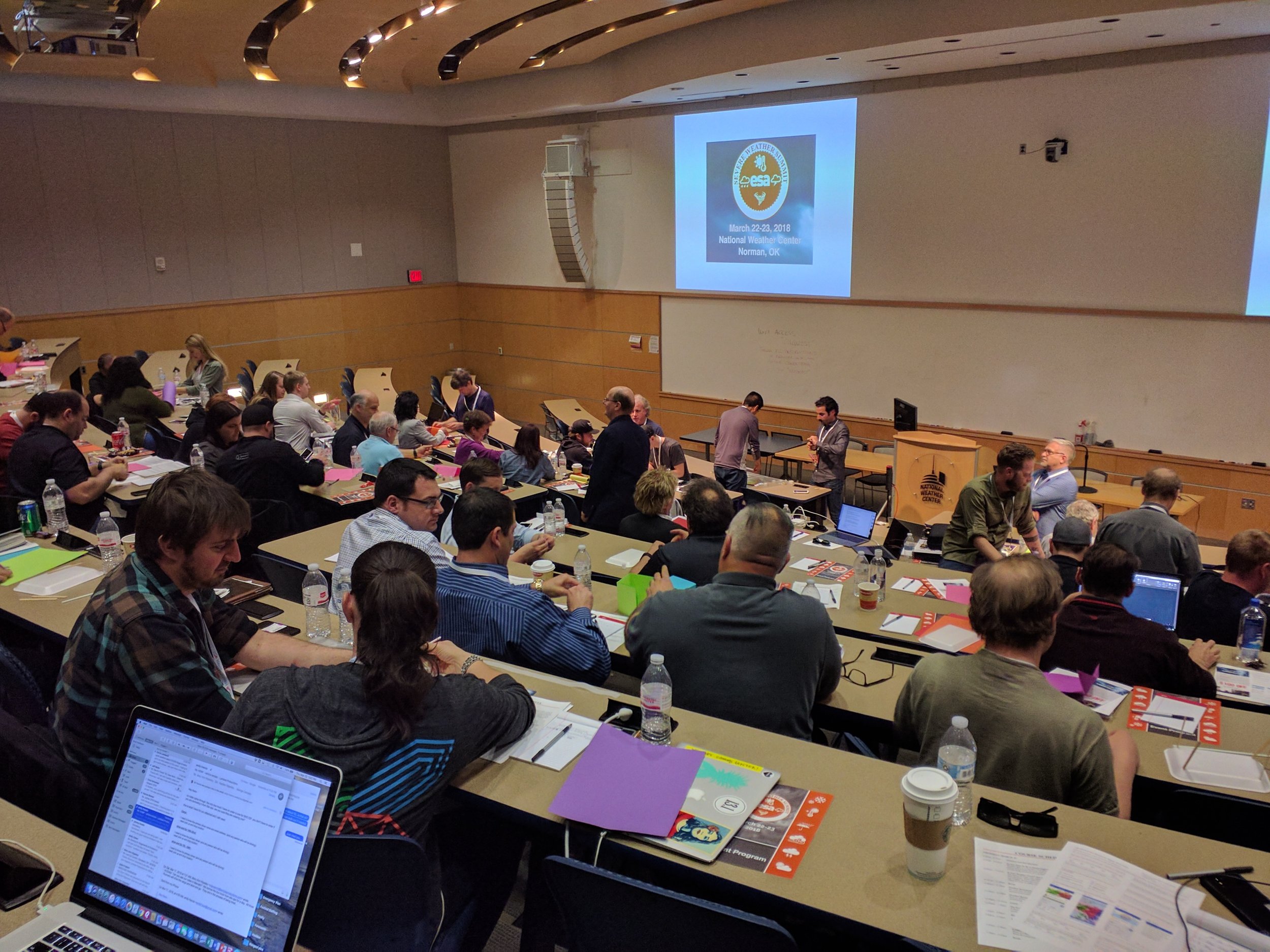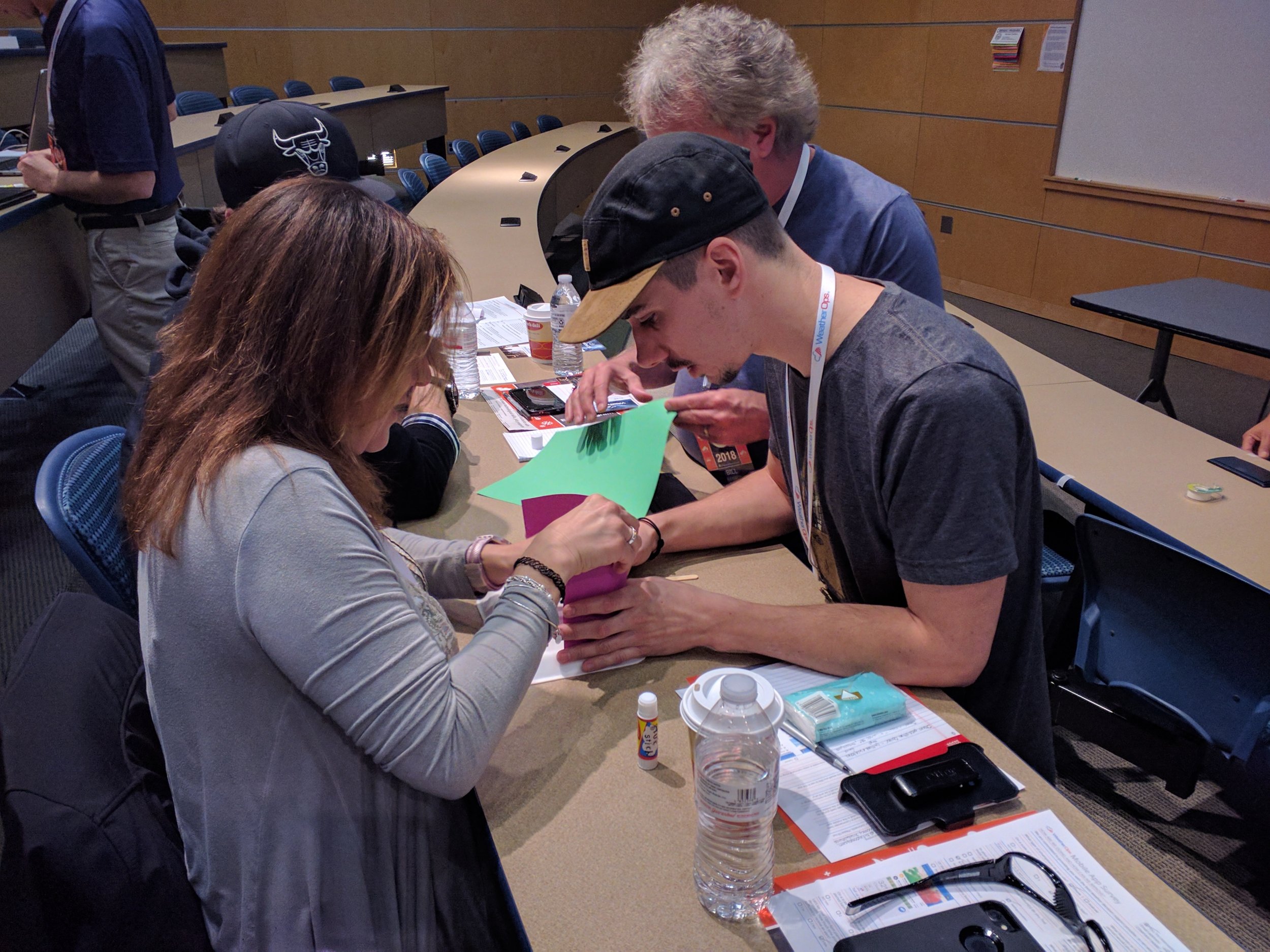Event Recap: 2018 Severe Weather Summit
Severe weather is one of the greatest threats facing outdoor live events. Unlike other hazards weather is unpreventable and uncertain. The proliferation of smart phone technology has made real-time weather data accessible to all. However, understanding that information and its limitations is essential to effective planning. Since 2015, ESA has endeavored to provide that insight through its annual Severe Weather Summit, held each spring at the National Weather Center in Norman, Oklahoma.
The Severe Weather Summit is a two-day examination of meteorological phenomena with the aim of improving attendee’s awareness of the common threats facing live events and providing them with the tools necessary to effectively plan for a variety of severe weather emergencies. The program features presentations and exercises by leading figures in the world of meteorology and event operations. University of Oklahoma Office of Emergency Preparedness Meteorologist Dr. Kevin Kloesel explores key threats to outdoor events including lightning, wind, and heat, and discusses why relying solely on the consumer weather apps for weather monitoring is insufficient and potentially dangerous. Representatives from the National Weather Service and Weather Decision Technologies discuss public and private sector resources and information available to those planning live events. Lambda Productions President Hadden Hippsley delivers a primer on building severe weather action plans, including considerations, stakeholders, and the importance of training and communication. Attendees are then tasked with developing and sharing a sample weather decision matrix which is then “tested” using actual weather data.
Several changes were made to this year’s program to further increase applicability to those working in live events. The previously described three-act structure of meteorology, planning, and a practical exercise was expanded to include segments on weather’s impact on outdoor structures (delivered by Clark Reder Principal Jeff Reder) and crowd behavior (ESA Vice President Steven Adelman). Greater emphasis was placed on group planning sessions and peer learning, with much of day two spent working in teams. Activities that demonstrate the challenges of weather prediction and designing for wind loads were added to reinforce the material. Even the traditional day two recap was been changed from a question and answer session to a dynamic (and quite challenging) game of Weather Jeopardy!
The 2019 Severe Weather Summit is scheduled for March 21-22, 2019, with registration to open in Summer 2018. Please visit http://severeweathersummit.com for updates.


